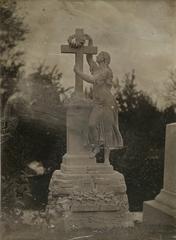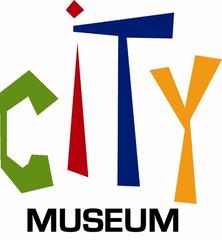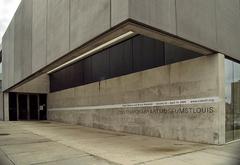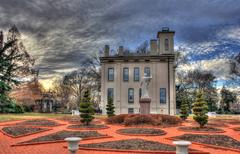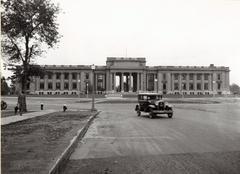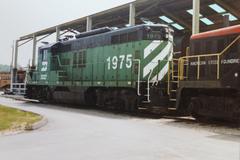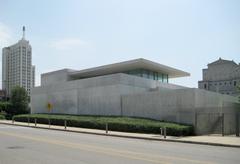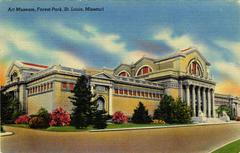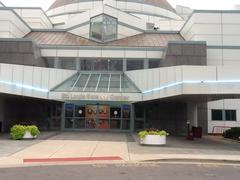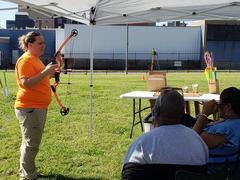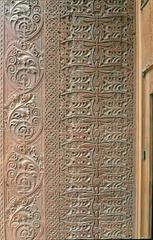
Sportsman’s Park St. Louis: Visiting Hours, Tickets, and Historical Guide
Date: 03/07/2025
Introduction
Sportsman’s Park, once the beating heart of St. Louis baseball, stands today as a symbol of the city’s rich sporting and cultural history. Located at the historic crossroads of Grand Avenue and Dodier Street, this legendary ground served as home to major league teams including the St. Louis Browns, the St. Louis Cardinals, and the NFL’s St. Louis Cardinals (Wikipedia). While the original stadium was demolished in the 1960s, the site continues to be used for community sports by the Herbert Hoover Boys & Girls Club, and its legacy endures through commemorative markers and ongoing youth athletics. This comprehensive guide details the park’s history, practical visiting information, and tips for making the most of your trip to this storied St. Louis landmark.
Table of Contents
- Historical Overview
- Visiting Sportsman’s Park Today
- Frequently Asked Questions (FAQ)
- Summary and Conclusion
- References and External Links
Historical Overview
Origins and Evolution
The story of Sportsman’s Park began in 1866 as the Grand Avenue Ball Grounds, established by August Solari. The park quickly became a baseball epicenter, hosting the St. Louis Brown Stockings by 1875. After a devastating fire in 1891, the park was rebuilt and evolved through several iterations, reflecting the growth of professional baseball in America (thisgreatgame.com).
The Browns, Cardinals, and Legendary Moments
By 1901, the St. Louis Browns constructed a new ballpark at the same site. In 1909, a concrete-and-steel double-deck grandstand was added, boosting capacity and modernizing the experience for fans. The Cardinals made Sportsman’s Park their home in 1920, sharing the venue with the Browns until the latter’s relocation in 1953. The stadium hosted numerous World Series, All-Star Games, and baseball legends such as Stan Musial, Rogers Hornsby, and Bob Gibson (baseballbiographies.com). The park was also instrumental in the integration of baseball, serving as a site for Negro League games and for pioneering the inclusion of Black fans (baseballbiographies.com).
Architectural and Community Impact
Sportsman’s Park’s 1909 renovation featured innovative design with intimate seating and a famously short right-field porch, making it a “hitter’s heaven.” The ballpark contributed to the local economy and neighborhood development through decades of game-day crowds and community events (thisgreatgame.com). Over its century-long existence, the park became an enduring symbol of St. Louis pride and American baseball heritage (stljewishlight.org).
After the Cardinals played their final game in 1966, the stadium was demolished, and the land was donated to the Boys & Girls Clubs of Greater St. Louis, which continues to serve the community today.
Visiting Sportsman’s Park Today
Location and Access
- Address: 2901 North Grand Boulevard, St. Louis, MO 63107 (Herbert Hoover Boys & Girls Club)
- Current Use: Community athletic field and clubhouse; site marked by a commemorative sign and preserved diamond layout (Atlas Obscura), (Chamber of Commerce)
Visiting Hours and Tickets
- Public Access: There are no formal visiting hours; the field is viewable from public sidewalks at any time. The athletic field and grounds are private property for Boys & Girls Club use. Respect current youth programs and do not enter the field without explicit permission.
- Tickets: None required. There is no entrance fee, as the site does not operate as a tourist attraction or museum.
- Guided Tours: No official tours are provided on site, but local historical organizations may include the park in their walking tours (Explore St. Louis).
Accessibility and Safety
- Accessibility: Sidewalks along North Grand Boulevard and Dodier Street offer accessible viewing. The grounds lack formal ADA amenities, so visitors with mobility needs should plan accordingly.
- Parking: Limited street parking is available; no dedicated visitor lots.
- Safety: The surrounding area is residential and urban; daytime visits are recommended. Use standard urban safety precautions.
What to See and Do
- Commemorative Plaques: Informational markers detail the site’s historical significance (Historic Baseball).
- Field and Layout: The original diamond outline is still visible. Photographs from the sidewalk capture the field and commemorative sign.
- Community Activities: The field is used for youth sports; observe ongoing activities respectfully.
Nearby Attractions
- Busch Stadium: The modern home of the Cardinals, offering tours and games (Itinerant Fan).
- Cardinals Hall of Fame and Museum: Extensive exhibits and memorabilia from St. Louis baseball history (Cardinals Hall of Fame Museum).
- Forest Park: Museums, outdoor activities, and cultural institutions (Town & Tourist).
- Crown Candy Kitchen: A historic local eatery near the park (Atlas Obscura).
Visitor Etiquette and Tips
- Respect the Club: Do not enter the athletic field without permission.
- Best Viewing: View the site and markers from public sidewalks.
- Combine Visits: Plan your day to include nearby attractions for a fuller experience.
- Photography: Use a zoom lens to capture commemorative signs and the field.
Frequently Asked Questions (FAQ)
Q: Can I enter the actual field at Sportsman’s Park?
A: No, the grounds are private property for the Boys & Girls Club. Viewing is limited to public sidewalks.
Q: Are tickets required?
A: No tickets or fees are required for visiting the site from public areas.
Q: Is there parking?
A: Limited street parking is available nearby.
Q: Are there guided tours?
A: No official tours are provided on site, but check local historical societies or the Explore St. Louis website for walking tour options.
Q: Is the site wheelchair accessible?
A: Sidewalks are accessible, but the grounds lack formal ADA pathways.
Summary and Conclusion
Though the original Sportsman’s Park no longer stands, the site remains a powerful symbol of St. Louis’s and America’s baseball heritage. Visitors can honor its legacy by viewing the commemorative markers and field outline from public areas, exploring the rich exhibits at the Cardinals Hall of Fame and Museum, and experiencing the vibrant sports culture of St. Louis at modern venues like Busch Stadium. Whether you’re a lifelong baseball fan or a student of urban history, Sportsman’s Park offers a unique window into a bygone era and the enduring spirit of the city.
For the most engaging experience, plan your visit during daylight hours, respect ongoing community activities, and consider pairing your trip with other local attractions. To deepen your exploration, make use of virtual tours and resources available through museums and historical societies. Stay connected with St. Louis’s sports legacy by downloading the Audiala app for guided tours and up-to-date historical stories.
References and External Links
- Sportsman’s Park St. Louis: History, Visiting Hours, Tickets & More
- ThisGreatGame: Sportsman’s Park History and Visitor Guide
- Atlas Obscura: Site of Sportsman’s Park
- Chamber of Commerce: Sportsman’s Park Site
- SABR: Sportsman’s Park History
- Explore St. Louis Official Tourism Site
- Boys and Girls Club of Greater St. Louis
- Cardinals Hall of Fame Museum
- Historic Baseball: Sportsman’s Park
- Town & Tourist: Things to Do in St. Louis
- Itinerant Fan: St. Louis Sports Travel Guide
- stljewishlight.org: Hot Dogs, Hall-of-Famers, and Memories of Sportsman’s Park
- Wikipedia: Sportsman’s Park






